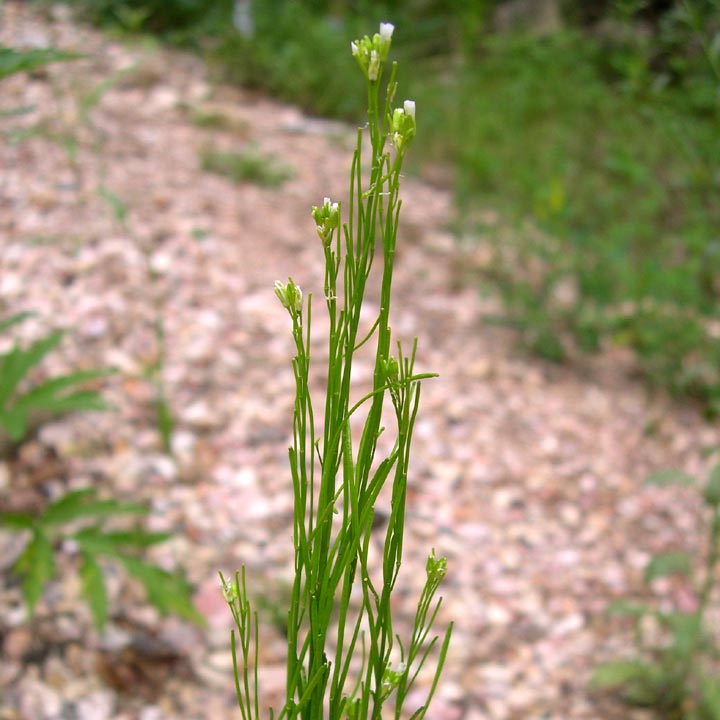|
Family: Brassicaceae |
Annuals, biennials, or perennials; (sometimes stoloniferous with vegetative rosettes, or caudex simple or branched); not scapose; often pubescent or hirsute, sometimes glabrous or glabrate, trichomes stalked, stellate, sometimes mixed with fewer, simple or forked ones. Stems erect, ascending, or decumbent, unbranched or branched distally. Leaves basal and cauline; petiolate or sessile; basal rosulate, petiolate or sessile, blade margins usually entire or dentate to denticulate, rarely lyrate-pinnatifid; cauline usually sessile, rarely shortly petiolate, blade (base often auriculate, sagittate, or amplexicaul), margins entire or dentate. Racemes (sometimes paniculate, usually simple, sometimes branched). Fruiting pedicels erect, ascending, or divaricate, (not reflexed or secund), slender. Flowers: sepals erect or ascending, ovate or oblong, lateral pair saccate or not basally, (margins membranous); petals white, pink, or purple, usually spatulate, oblong, or oblanceolate, rarely obovate, claw differentiated from blade, (shorter than sepals, apex obtuse or rounded); stamens tetradynamous; filaments usually not dilated basally; anthers ovate, oblong, or linear, (apex obtuse); nectar glands confluent, subtending bases of stamens, lateral glands semiannular or annular, median glands rarely absent, (sometimes toothlike and distinct). Fruits siliques, usually sessile, rarely shortly stipitate, linear, smooth or torulose, (usually straight, sometimes slightly curved), flattened, latiseptate; valves (papery), each with obscure or prominent midvein, glabrous; replum (visible), rounded; septum complete, (membranous, translucent, veinless); ovules 10-86[-110] per ovary; style obsolete or distinct; stigma capitate, (sometimes slightly 2-lobed). Seeds uniseriate, flattened, winged or margined, oblong or orbicular; seed coat (smooth or minutely reticulate), not mucilaginous when wetted; cotyledons accumbent. x = 8. Sep erect or spreading, the outer sometimes saccate at base; pet white, yellowish, or pink, narrowly spatulate to oblong or obovate; anthers oblong; ovary cylindric; ovules numerous; style short and scarcely differentiated; stigma truncate; fr linear, elongate, flat or subterete, the valves often with a midvein or reticulately veined; seeds flattened, often winged; annual to perennial herbs, the basal lvs petioled, usually simple, the cauline smaller and usually sessile; pubescence variable but usually present. 180, N. Hemisphere. Gleason, Henry A. & Cronquist, Arthur J. 1991. Manual of vascular plants of northeastern United States and adjacent Canada. lxxv + 910 pp. ©The New York Botanical Garden. All rights reserved. Used by permission. |


